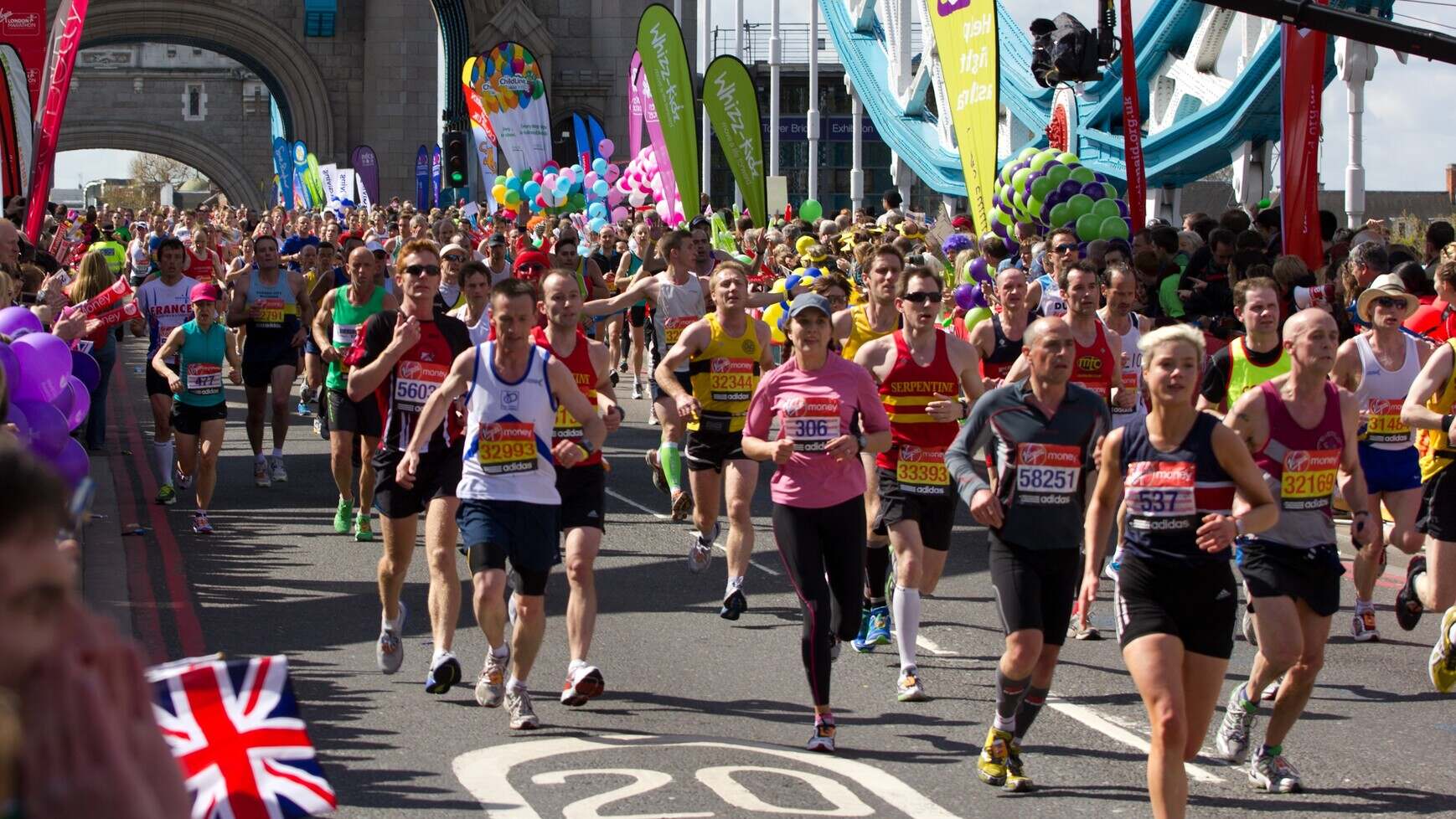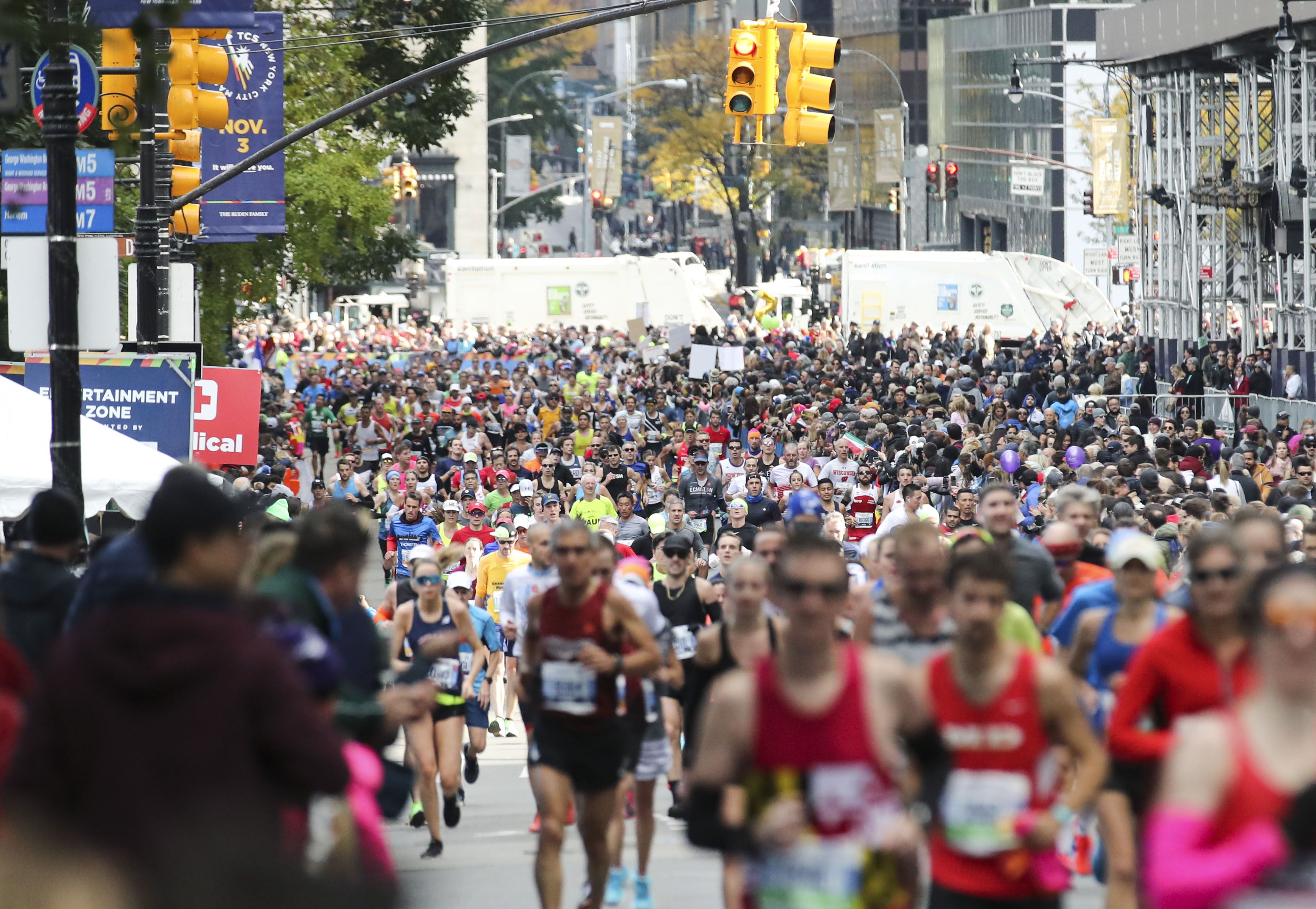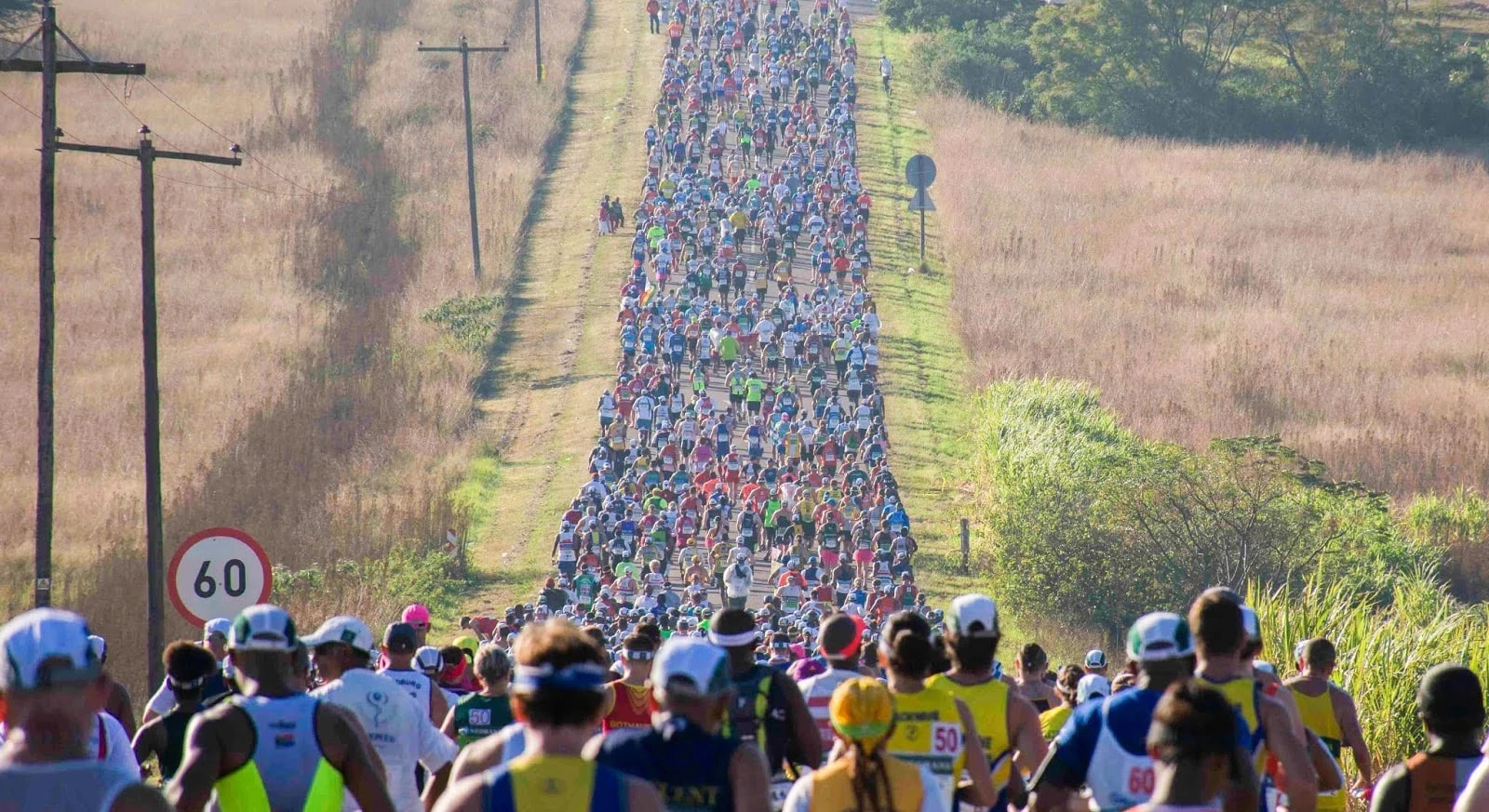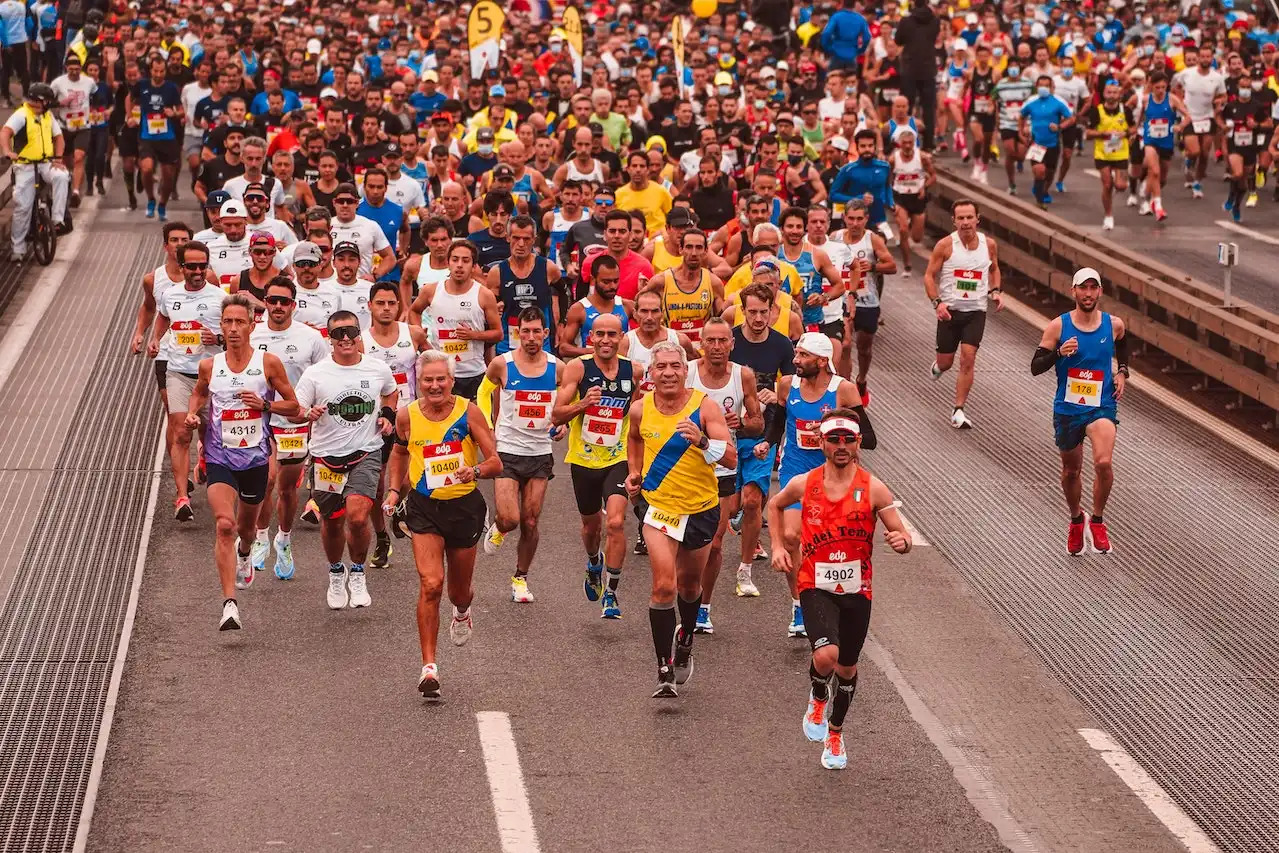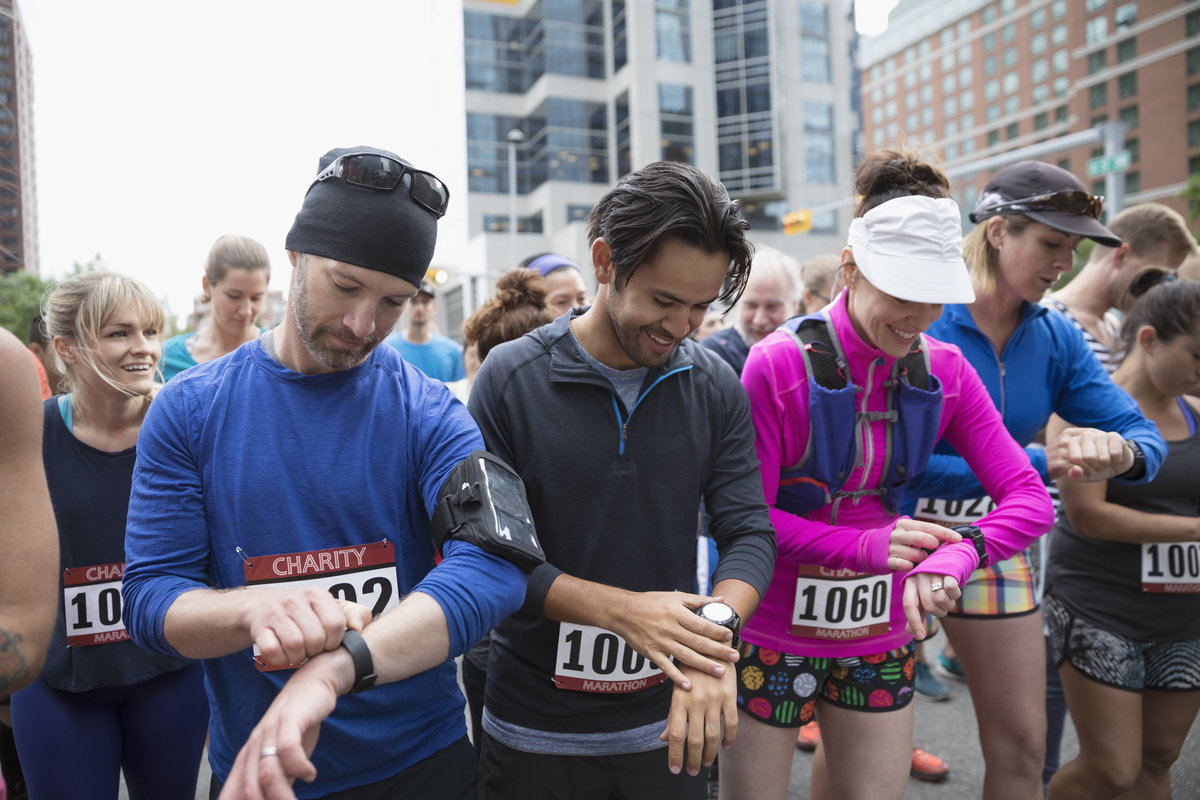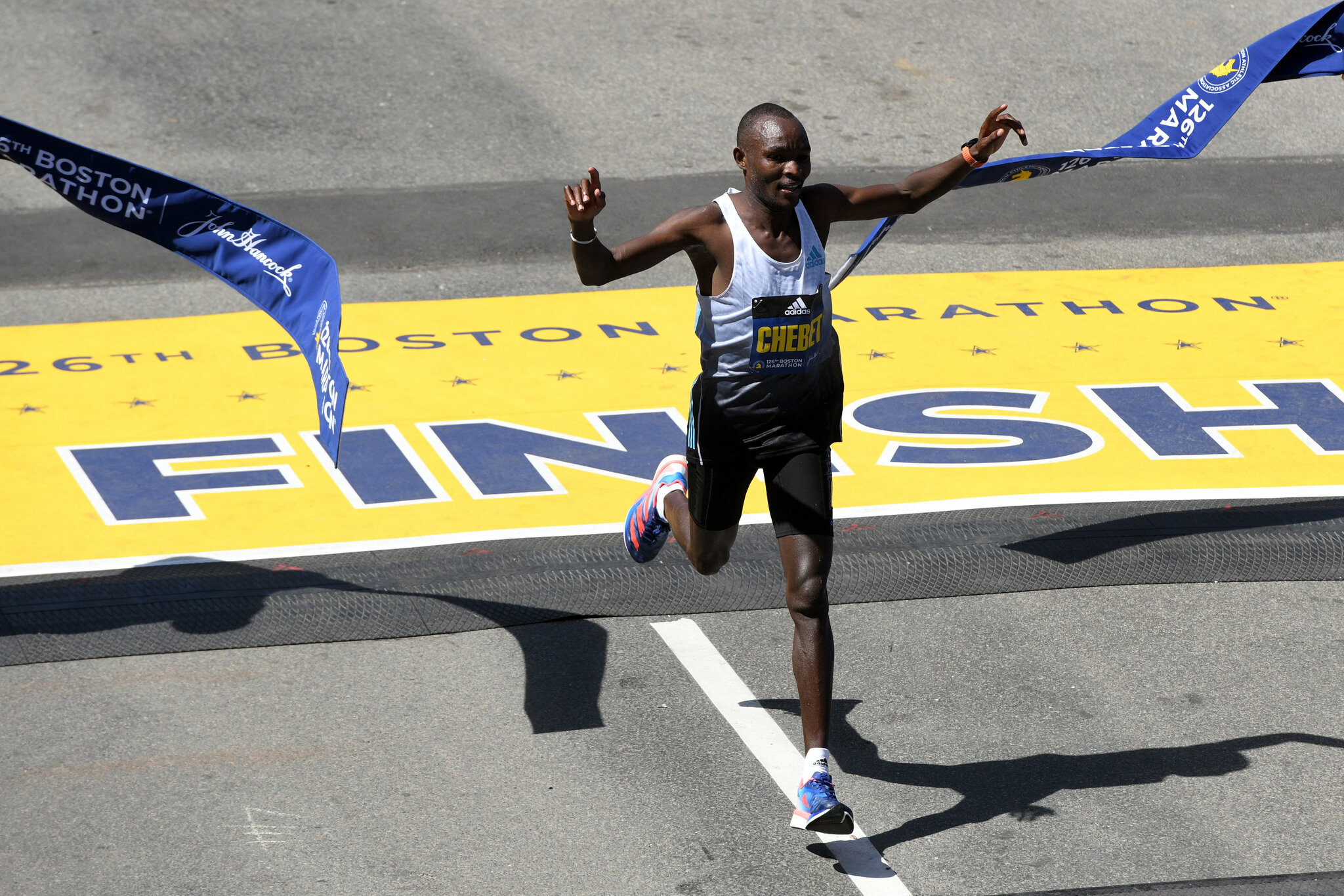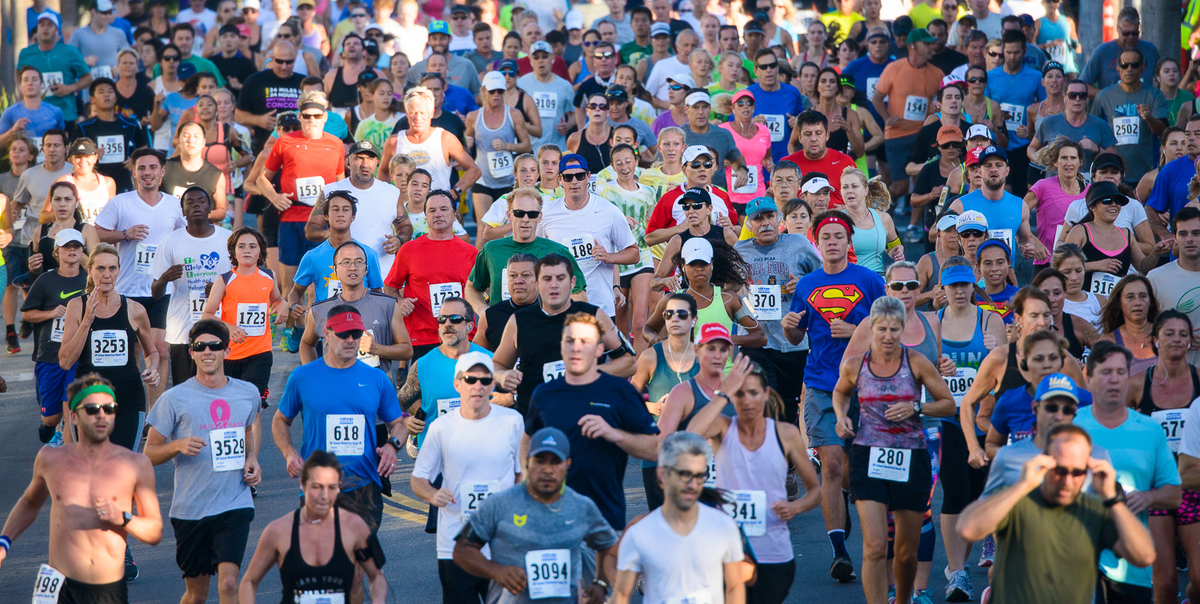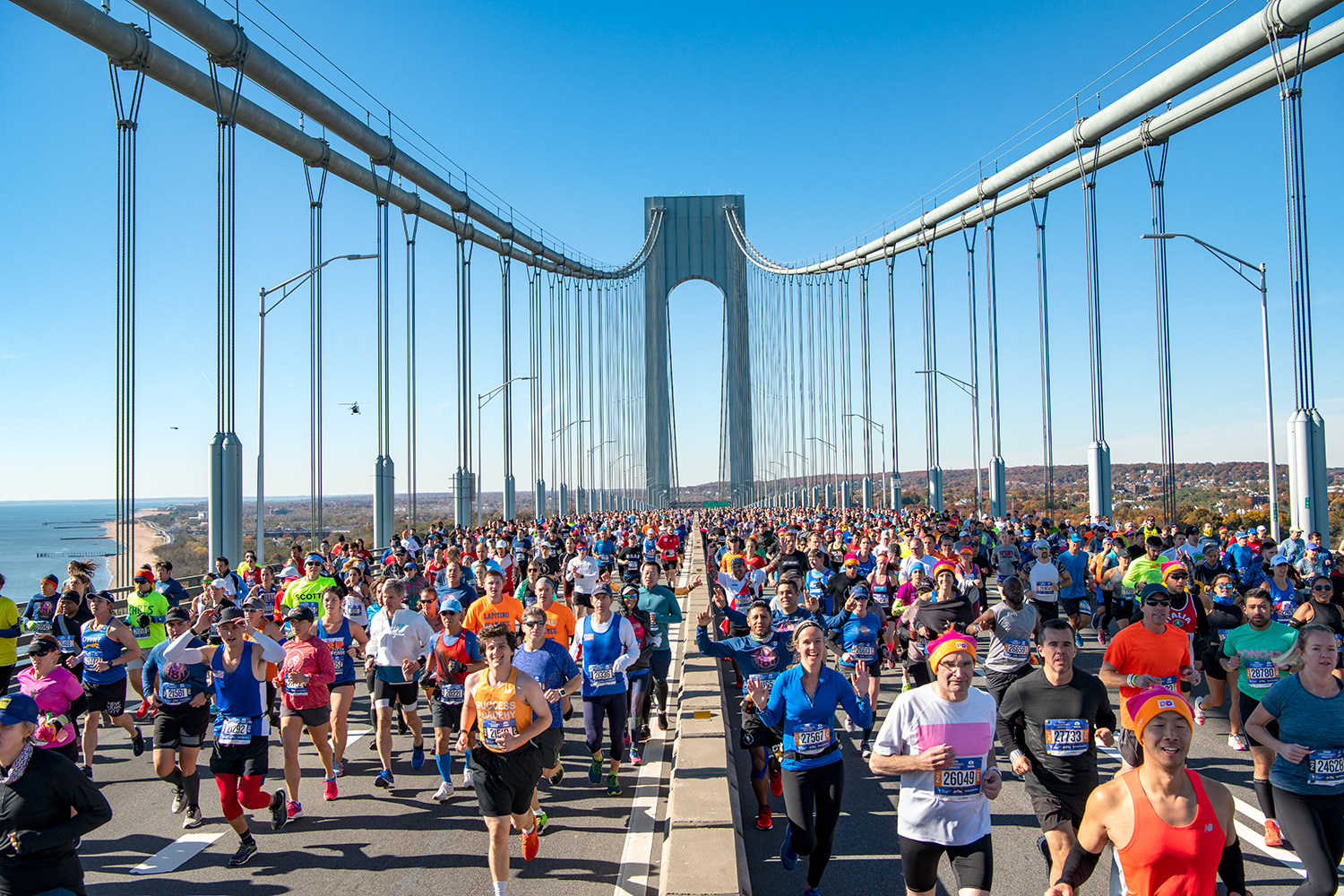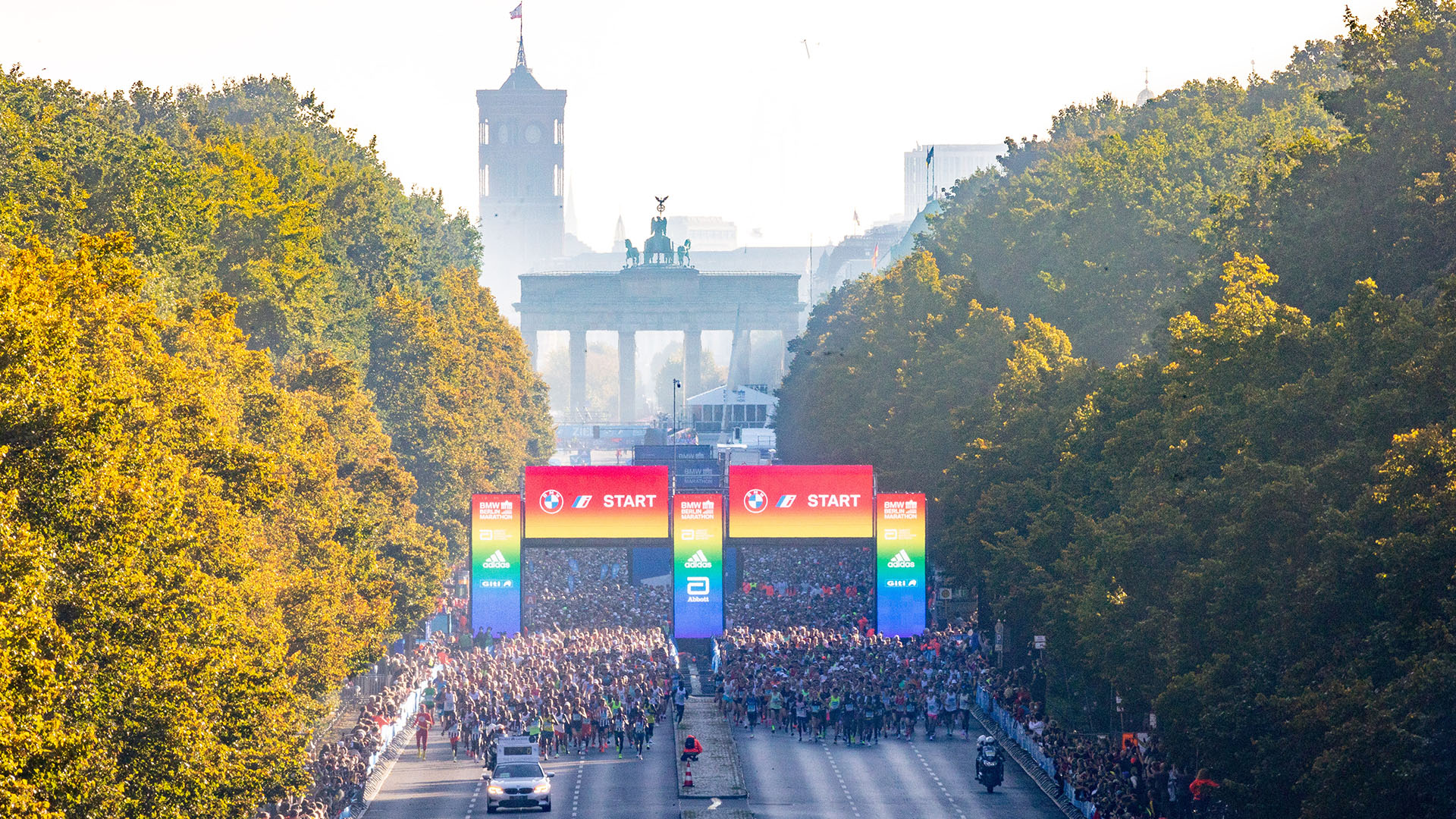

Featured
What Time Does The Berlin Marathon Start
Modified: January 2, 2024
Get all the details you need about the Berlin Marathon, including the featured start time. Plan your day and be ready for this exciting event!
Introduction
The Berlin Marathon is one of the most prestigious and highly anticipated long-distance running events in the world. Held annually in the vibrant city of Berlin, Germany, this marathon attracts elite athletes, amateur runners, and enthusiastic spectators from all corners of the globe. Known for its fast and flat course, the Berlin Marathon has become synonymous with record-breaking performances and has earned its place as one of the World Marathon Majors.
The history and significance of the Berlin Marathon can be traced back to its inaugural edition in 1974. Over the years, it has gained immense popularity and has become a highlight on every runner’s calendar. The marathon showcases not only the city’s rich culture and history but also its dedication to sporting excellence.
The event’s popularity can be attributed to several factors, including its reputation for producing world records. The favorable weather conditions in late September, the flat course, and the enthusiastic crowd contribute to creating an optimal environment for runners to achieve their personal bests. Moreover, the Berlin Marathon offers a unique opportunity for runners to experience the city’s iconic landmarks and vibrant atmosphere, as the route winds through historical and picturesque locations.
The start time of the Berlin Marathon plays a crucial role in setting the stage for this extraordinary event. Determining the optimal start time is essential to ensure the safety and comfort of the participants, as well as to create an exciting atmosphere for the spectators. The start time is carefully chosen, taking into consideration various factors such as weather conditions, logistical considerations, and the overall experience for the participants.
In this article, we will explore the history and popularity of the Berlin Marathon, delve into the route and its significance, and dive into the factors that influence the decision regarding the start time of this prestigious event.
History of the Berlin Marathon
The Berlin Marathon has a rich and fascinating history that dates back to its inception in 1974. It was first organized by the German Athletics Association (DLV) and West German television broadcaster, Rundfunk der DDR. The inaugural event attracted just 286 participants, but it quickly grew in popularity and became an iconic race in the international running community.
One of the most notable aspects of the Berlin Marathon’s history is the impressive number of world records broken on its course. The event gained a reputation as the “fastest marathon in the world” due to its flat and fast route, making it ideal for elite athletes to set new world records. In fact, the men’s world record has been broken seven times at the Berlin Marathon, and the women’s world record has been broken four times.
In 1984, the Berlin Marathon made history by hosting the first-ever women’s marathon at the Olympic Games. This landmark event showcased the growing recognition of women’s participation in long-distance running and set the stage for future milestones in the sport.
Another significant moment in the marathon’s history occurred in 1990, shortly after the fall of the Berlin Wall. The race took on a symbolic meaning as it brought both East and West Berlin together in a celebration of unity and freedom. The marathon route crossed through the iconic Brandenburg Gate, symbolizing the reunification of the city and serving as a poignant reminder of a divided past.
Over the years, the Berlin Marathon has witnessed remarkable performances from legendary athletes. Ethiopian long-distance runner Haile Gebrselassie set world records at the event in 2007 and 2008, solidifying the race’s reputation as a prime location for achieving extraordinary feats in long-distance running.
The event has also embraced technology and innovation. In 2020, due to the COVID-19 pandemic, the Berlin Marathon introduced a virtual race format, allowing participants from around the world to complete the marathon in their own cities and still be part of the iconic event. This adaptation showcased the resilience and adaptability of the Berlin Marathon, even in the face of unprecedented challenges.
Today, it continues to attract thousands of participants of all ages and abilities, including both seasoned runners and first-time marathoners. The Berlin Marathon has firmly established itself as a world-class event, captivating audiences with its history, world records, and the extraordinary stories of those who have conquered its challenging course.
Importance and Popularity of the Berlin Marathon
The Berlin Marathon holds immense importance and enjoys widespread popularity within the global running community. It has earned its reputation as one of the premier marathons in the world, attracting participants from all walks of life and captivating spectators with its electrifying atmosphere.
One of the key reasons behind the marathon’s significance is its status as one of the World Marathon Majors. Alongside prestigious races such as the Boston Marathon, the London Marathon, the Tokyo Marathon, the Chicago Marathon, and the New York City Marathon, the Berlin Marathon forms an elite group of races that showcase the best in long-distance running. These marathons offer not only substantial prize money but also the opportunity for elite runners to compete for the overall World Marathon Majors title, amplifying the competition and drawing top talent to their respective courses.
Additionally, the Berlin Marathon has gained popularity for its ability to produce world records. Its flat and fast course, combined with ideal weather conditions in late September, present an ideal setting for athletes to achieve their personal bests. The excitement of witnessing records being broken has contributed to the race’s allure and continues to attract elite runners seeking to etch their names in the annals of running history.
Moreover, the Berlin Marathon is known for its remarkable organization and the support it provides to its participants. The event features numerous aid stations, medical support, and a vibrant crowd lining the course, offering encouragement to the runners. The level of support and enthusiasm from the spectators creates an incredible atmosphere that motivates and energizes the participants, enhancing their overall experience and aiding them in reaching their goals.
Another essential aspect of the Berlin Marathon’s popularity is the opportunity it provides to explore the vibrant and historical city of Berlin. The race route showcases some of Berlin’s most iconic landmarks, including the Brandenburg Gate, the Berlin Cathedral, and the Charlottenburg Palace. Participants not only get to experience the thrill of the marathon but also immerse themselves in the rich culture and history of this captivating city.
Furthermore, the Berlin Marathon embraces inclusivity and encourages participation from all athletes, regardless of their abilities. The event offers various categories such as wheelchair racing, hand cycling, and the Inline Skating Marathon, allowing individuals with different interests and abilities to take part in the excitement and camaraderie of the event.
The social impact of the Berlin Marathon cannot be understated. It brings people together from different corners of the world, creating a sense of unity and camaraderie among participants and spectators alike. The race fosters a spirit of collaboration, dedication, and perseverance, inspiring countless individuals to set and achieve their own personal goals.
All these factors combined have contributed to the enduring popularity and importance of the Berlin Marathon. It has become a revered event in the sporting calendar, celebrated for its history, world records, engaging course, and the remarkable stories of triumph and determination that unfold with each passing year.
Route of the Berlin Marathon
The route of the Berlin Marathon is a spectacle in itself, taking participants on a breathtaking journey through the streets of one of Europe’s most vibrant and historically significant cities. Known for its flat and fast course, the route has played a significant role in facilitating the breaking of multiple world records.
The marathon starts and finishes near the iconic Brandenburg Gate, a symbol of the city’s unity and strength. As the starting point for the race, this historic landmark sets the stage for the challenging yet exhilarating journey that lies ahead.
The course then winds its way through the heart of Berlin, showcasing the city’s cultural and architectural highlights. Runners pass by landmarks such as the Reichstag building, the Berlin Cathedral, and the Museum Island, giving them a glimpse of Berlin’s rich history and diverse architectural styles.
One of the most memorable sections of the route is the passage along Kurfürstendamm, Berlin’s renowned shopping boulevard. This vibrant and bustling street offers a unique blend of historical landmarks, high-end boutiques, and bustling cafes. The atmosphere created by the enthusiastic spectators lining the streets adds to the energy and excitement of the race.
As the route continues, runners cross the river Spree, taking in stunning views of the Berlin skyline. They pass through the famous Charlottenburg district, home to the magnificent Charlottenburg Palace, a majestic and opulent royal residence that provides a picturesque backdrop for the marathon.
The course then leads runners through the diverse neighborhoods of Berlin, including the trendy Kreuzberg and Friedrichshain areas. These districts are known for their vibrant street art, cultural diversity, and lively atmosphere, making the marathon a truly immersive experience for participants and spectators alike.
One of the most anticipated moments of the Berlin Marathon route is the approach to the finish line. As runners reenter the city center, they pass through the iconic Brandenburg Gate once again, their final destination in this grueling race. The sight of the gate provides an exhilarating surge of motivation and serves as a symbol of accomplishment for every participant crossing the finish line.
The route of the Berlin Marathon is meticulously designed to offer both an enjoyable experience for the participants and a visually stunning showcase of the city’s landmarks and neighborhoods. Its flat and easy terrain combined with the lively atmosphere created by the crowd make it an ideal setting for runners to achieve personal bests and contribute to the marathon’s reputation as a record-breaking race.
With its blend of history, architecture, cultural diversity, and a supportive crowd, the Berlin Marathon route is undoubtedly one of the most captivating and engaging courses in the world of marathons.
Start Time and Schedule of the Berlin Marathon
The start time and schedule of the Berlin Marathon are carefully planned to ensure the smooth and efficient execution of the event. Several factors are taken into consideration, including weather conditions, logistics, and the overall experience for participants and spectators.
Traditionally, the Berlin Marathon takes place on the last weekend of September. This timing is chosen to benefit from the favorable weather conditions typically experienced in Berlin during this time of year. The cooler temperatures and lower humidity levels provide optimal conditions for long-distance running, reducing the risk of heat-related issues and allowing participants to perform at their best.
The official start time of the Berlin Marathon is typically in the morning, usually around 9:15 am local time. This early start allows participants to take advantage of the cooler temperatures and minimizes the potential impact of direct sunlight during the race. Given the thousands of participants, it is essential to stagger the start to avoid congestion along the course.
The schedule of the Berlin Marathon is designed to accommodate different categories of runners. The elite athletes, who compete for record-breaking performances, are usually placed in the first starting group. They are followed by additional waves of runners, organized according to their expected finish times, to ensure a smooth flow of participants along the course.
Leading up to the marathon, participants are required to pick up their race bibs and timing chips during the race expo, which is usually held a couple of days before the event. This allows runners to familiarize themselves with the route and take part in pre-race activities, such as motivational talks and workshops.
The Berlin Marathon typically spans a whole weekend of events, providing a vibrant and engaging atmosphere for participants and spectators alike. In addition to the main marathon race, there are often other races and events catering to different age groups and abilities. These include a 10k run, a children’s race, and an inline skating marathon, further showcasing the inclusive nature of the event.
The schedule also includes various entertainment and cultural activities throughout the marathon weekend. Spectators can enjoy live music performances, cheer on the runners at designated cheer zones along the course, and soak in the festive atmosphere that permeates the city during this time. Additionally, the finish line area is transformed into a celebration zone, where participants can reunite with their loved ones, collect their medals, and relax after completing the demanding race.
The organizers of the Berlin Marathon prioritize the safety, comfort, and overall experience of the participants, as well as the logistics of managing a large-scale event. By carefully considering factors such as weather conditions, timing, and the engaging schedule of events, they strive to create an unforgettable and inclusive marathon experience for all.
Factors Influencing the Start Time Decision
The decision regarding the start time of the Berlin Marathon is influenced by several key factors that are carefully taken into consideration by the event organizers. This decision plays a significant role in ensuring the safety and comfort of the participants, as well as creating an optimal environment for achieving exceptional race performances.
One of the primary factors influencing the start time decision is the weather conditions. The organizers aim to select a time of day when the temperature and humidity levels are most favorable for long-distance running. Typically, the Berlin Marathon takes place in late September, when the weather in Berlin tends to be cooler and more pleasant compared to other months. By starting the race early in the morning, runners can take advantage of the cooler temperatures and minimize the risk of heat-related issues during the race.
Another important consideration is the logistics of managing a large-scale marathon event. With thousands of participants and a long course, it is crucial to stagger the start times to prevent congestion and ensure a smooth flow of runners along the route. By dividing participants into waves, based on their expected finish times, the organizers can minimize bottlenecks and create an efficient flow of runners, reducing the potential for accidents or interruptions.
Furthermore, the start time is chosen to optimize the overall experience for both participants and spectators. By starting the race in the morning, it allows participants to begin their run with fresh legs and energy, enhancing their performance and enjoyment of the event. Spectators also benefit from an early start time as it enables them to cheer on the runners and offer support throughout the race without disrupting their own daily activities.
The start time decision is also influenced by the desire to create an electrifying atmosphere along the course. By starting the race when the city is just waking up, it allows more people to come out and support the runners. The energy of the crowd plays a vital role in motivating participants to push through the challenging parts of the course and achieve their race goals.
Furthermore, the start time also takes into account other events and activities happening in the city. The organizers aim to minimize conflicts with other major events or road closures that may impact the marathon course or cause inconvenience to both runners and residents. This ensures that the marathon can have the undivided attention of participants and spectators, allowing everyone to fully immerse themselves in the race experience.
The decision regarding the start time of the Berlin Marathon is a delicate balance between various factors. The organizers carefully analyze weather conditions, consider logistical challenges, prioritize the experience of participants and spectators, and aim to create an electric atmosphere throughout the course. By considering all these aspects, they ensure that the marathon is not only a safe and well-organized event but also a memorable and enjoyable experience for all who participate or cheer along the route.
Conclusion
The Berlin Marathon is a highly esteemed event that has captivated the running world with its rich history, record-breaking performances, engaging course, and inclusive atmosphere. Its significance and popularity are evident in the thousands of participants and enthusiastic spectators who gather in the heart of Berlin each year for this extraordinary event.
Throughout its history, the Berlin Marathon has evolved into a premier race, attracting elite athletes and amateur runners alike. The marathon’s flat and fast course, coupled with favorable weather conditions, have provided the stage for numerous world records to be broken over the years. Runners from around the world flock to Berlin with the dream of achieving personal bests and leaving their mark on the sport.
The route of the Berlin Marathon showcases not only the city’s architectural and cultural landmarks but also its spirit of unity and resilience. From the iconic Brandenburg Gate to the scenic riverside stretches and vibrant neighborhoods, the course offers an immersive experience for participants and a visually stunning backdrop for spectators.
The start time and schedule of the Berlin Marathon are carefully planned to optimize the running conditions, ensure a smooth flow of participants, and create an engaging atmosphere. These decisions take into account factors such as weather conditions, logistics, and the overall experience for both runners and spectators.
Ultimately, the importance and popularity of the Berlin Marathon lie in its ability to bring people together from all walks of life and inspire them to push their limits. It serves as a celebration of human achievement, determination, and the joy of running. The event has become an iconic fixture in the running world, leaving a lasting impression on both participants and spectators alike.
Whether you are an elite athlete striving to break world records, a dedicated runner chasing a personal best, or a spectator looking to soak in the electrifying atmosphere, the Berlin Marathon offers a truly unforgettable experience. It is a testament to the power of sport and the indomitable spirit of the human endeavor.
